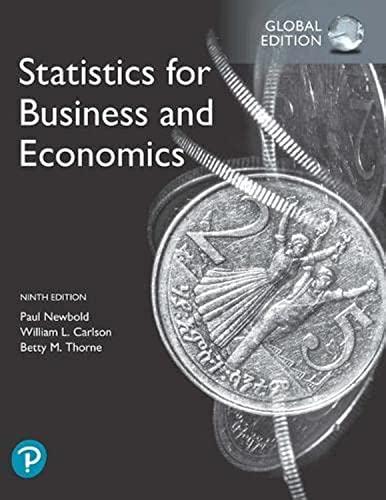The Norwegian architecture company, Invent as Design, wants to predict the number of worker-hours necessary to finish
Question:
The Norwegian architecture company, Invent as Design, wants to predict the number of worker-hours necessary to finish the design of a new building in Tromsø. Relevant explanatory variables were thought to be the number of floors in the building, the weight of materials, and the number of parts it had in common with other structures built by the company. A sample of 23 of the company’s structures was taken, and the following model was estimated:

where
y = design effort, in millions of worker-hours
x1 = number of floors in the building
x2 = the weight of materials, in tons
x3 = percentage of parts in common with other buildings
The estimated regression coefficients were as follows:
b1 = 0.631, b2 = 0.066, b3 = 0.017
The estimated standard errors were as follows:
sb1 = 0.096, sb2 = 0.037, sb3 = 0.0023
a. Find 90% and 95% confidence intervals for β1.
b. Find 95% and 99% confidence intervals for β2.
c. Test against a two-sided alternative the null hypothesis that, all else being equal, the plane’s weight has no linear influence on its design effort.
d. The error sum of squares for this regression was 0.397. Using the same data, a simple linear regression of design effort on the percentage of common parts was fitted, yielding an error sum of squares of 3.397. Test, at the 2% level, the null hypothesis that, taken together, the variable’s number of floors and weight of materials contribute nothing in a linear sense to explaining the changes in the variable, design effort, given that the variable percentage of common parts is also used as an explanatory variable.
Step by Step Answer:

Statistics For Business And Economics
ISBN: 9781292315034
9th Global Edition
Authors: Paul Newbold, William Carlson, Betty Thorne





